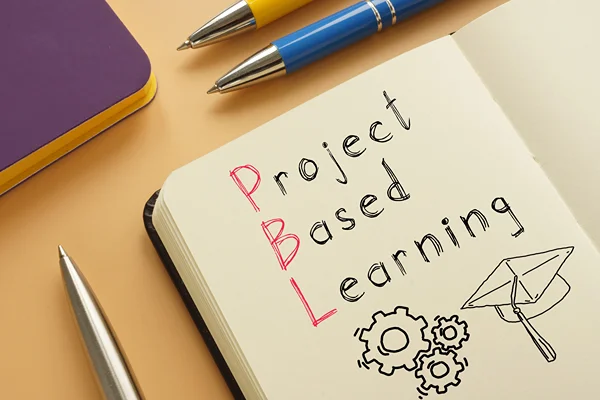Why Education Is Always Better Than Refusal When It Comes To Child Safety
As parents, many of us lose count of how many times we tell our kids ‘no’ in a day. From wanting to eat that bit of food off the floor, to constantly reaching for items they know they can’t have, kids love to push boundaries. In fact, it’s what they’re programmed to do as they explore the world around them!
Parents are the gatekeepers of this process, and it’s our responsibility to keep them safe. Hence why ‘no’ can become a catchphrase from toddler age to the teen years, and even beyond. Yet, there’s an emerging train of thought amongst some circles that suggests this overuse of those two letters could be doing more harm to our parenting efforts than good.
For one thing, using ‘no’ too often can cause our kids to switch off to our warnings, leaving them more at risk of unchecked dangerous behaviors. Some parenting experts also suggest that simple refusals, which are often given with no explanation, don’t offer the depth of learning that kids require to truly grow.
That’s not to say you should become a yes parent. Saying no certainly has its place in dangerous situations! However, it’s also true that education is almost always better than a blanket refusal. Approaching problems with a more constructive mindset can certainly instigate better outcomes, and we’re going to consider the reasons why in this article.
# 1 – Setting Clearer Boundaries
A lot of the problem with the word ‘no’ is the simple fact that it leaves no room for explanation or discussion. This phrase is uttered to put an end to a behavior, but it ultimately offers nothing constructive to stop your child from trying that behavior again as soon as you look away. These limitations can be frustrating for everyone involved, but there is a better option.
Rather than refusal, it can be more effective to think about the best ways to communicate clear boundaries around why a behavior isn’t advisable. Of course, it’s important to stop that behavior first, but then it’s worth talking about the risks of whatever a child was attempting to do, and the next step necessary to keep safe. For instance, ‘You can’t play with Mummy’s car keys because they’re sharp and might hurt you. I’m going to take them away so that you don’t cut your hand.’
This provides a clear outline of risks and outcomes, which a child is far more likely to remember moving forward than they are to recall a telling-off or blanket refusal that they don’t understand in the first place.

# 2 – Teaching Proper Skills
As well as reducing the prevalence of a certain behavior, leaning towards a more educational approach could also serve to teach children how to tackle a task with safety in mind. Admittedly this does depend on age, but age-appropriate teaching could lead to extra peace of mind for everyone involved.
For instance, instead of completely banning your child from using the family computer, it’s far more conducive to taking the time to teach about internet safety and the types of websites they can use without worry. Alternatively, if your older child is interested in helping in the kitchen, investing in things like age-suitable sets of knives, or working with them to learn hob safety, can have far better outcomes than telling them ‘no’ just because it’s your go-to.
This is true even as your child grows, and could include talking to your teen about safe driving rather than refusing their requests for lessons, or even teaching the use and safety tips required for tools like a chainsaw as necessary. That way, you can be sure that your teen knows how to protect themselves when they inevitably do what they want to do anyway.
# 3 – Encouraging Open Communication
Nothing can shut a conversation down faster than the word ‘no’. This is a roadblock in any negotiation, especially if you’re in the habit of saying it without actually listening or explaining yourself. As a result, there’s a high risk that your children will stop asking for your permission and will instead begin finding ways to engage in problematic behaviors without your knowledge, particularly once they reach their teen years.
By comparison, an educational approach is far more likely to open communication around things like why your child is interested in that activity, why you have doubts, and also when they can reasonably give it a try. This makes it more likely that you’ll both consider one another’s viewpoints, and arrive at an agreement that’s right for everyone, and it is more likely to see your child consulting with you about other issues moving forward.

# 4 – Instilling Confidence
If you’re always saying no to your child, they may start to hear this refusal as a clear message that they aren’t capable of making their own decisions or learning potentially difficult skills. This can be a huge knock to a child’s confidence in trying new things, especially if it continues throughout childhood.
Even if you don’t think they’re ready to do whatever they’re asking about, explaining why, and setting an age for which they could start learning about things, is key to ensuring they still feel capable, albeit not quite yet.
Equally, if your child is ready to safely learn skills like cooking with your help, giving them that opportunity can be a huge boost to their confidence, their sense of self, and the feeling that they have a supportive home life.
Conclusion
Parents have been saying no to their children for decades, and with younger kids especially, there will be times when you still need to set this non-negotiable boundary. Often, though, we offer outright refusal when education could be a better way to prevent our children from doing something or ensure their safety while they embark on a new pursuit. This may be a difficult switch to make, but next time you go to say ‘no’ to your family, think about whether there’s a lesson to be learned instead.






